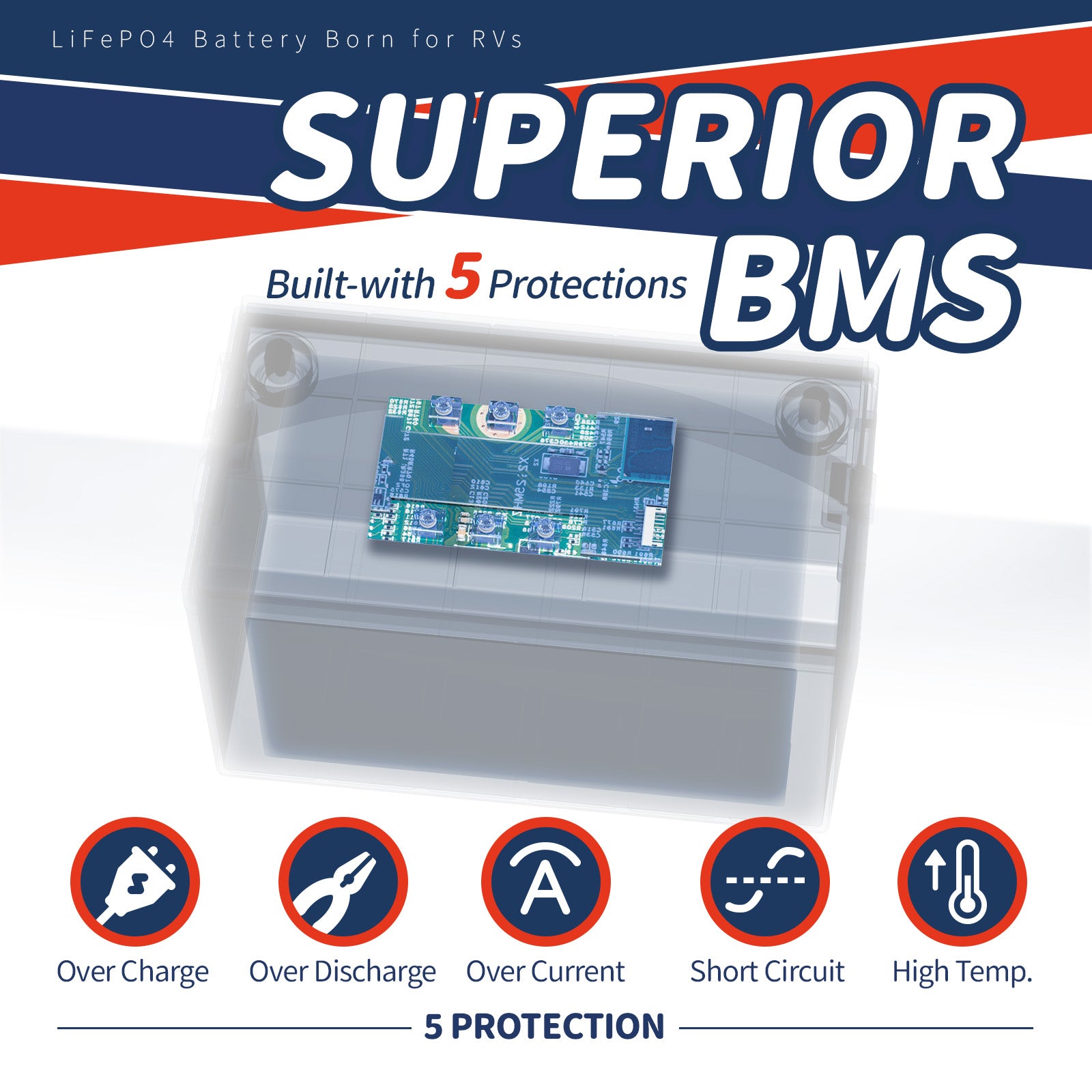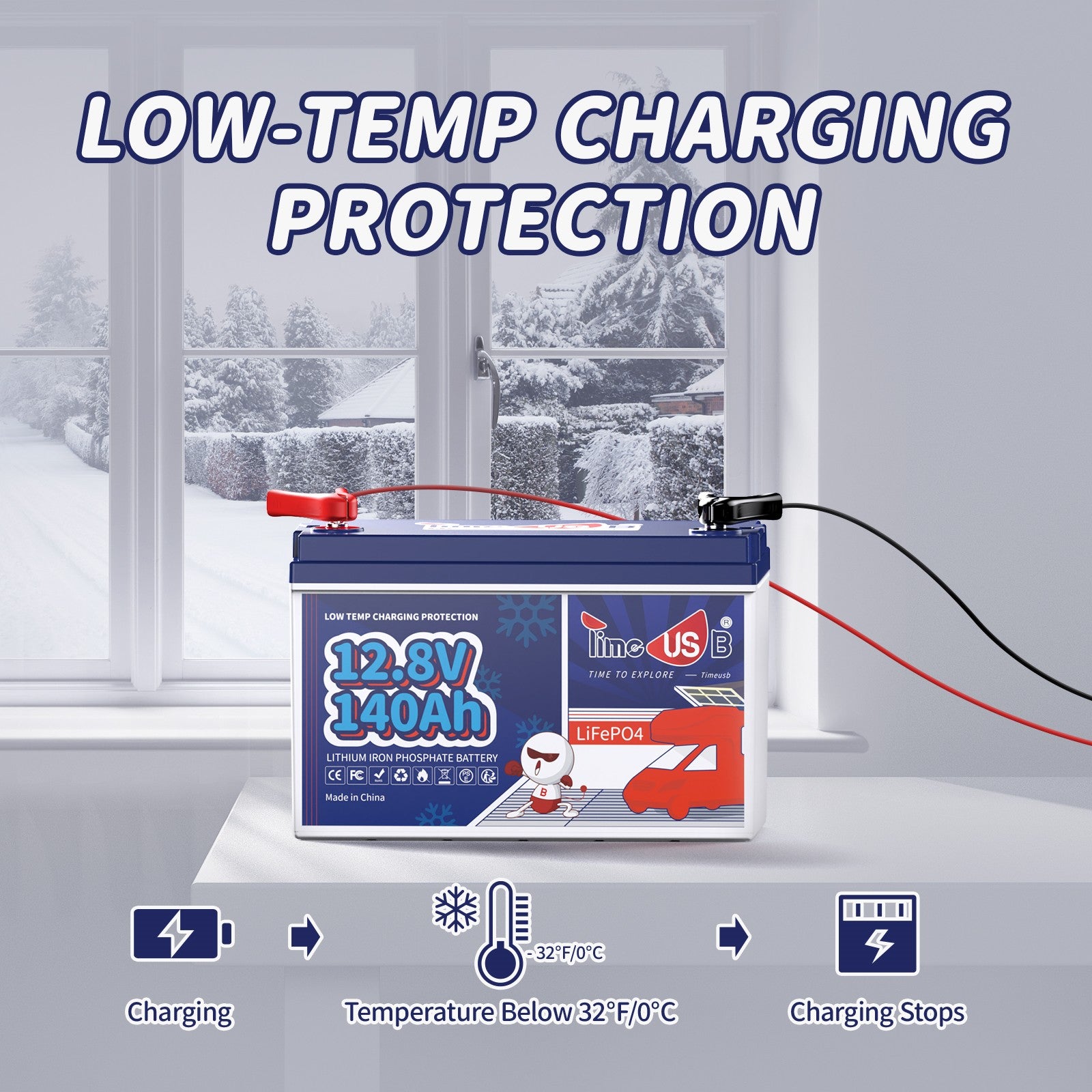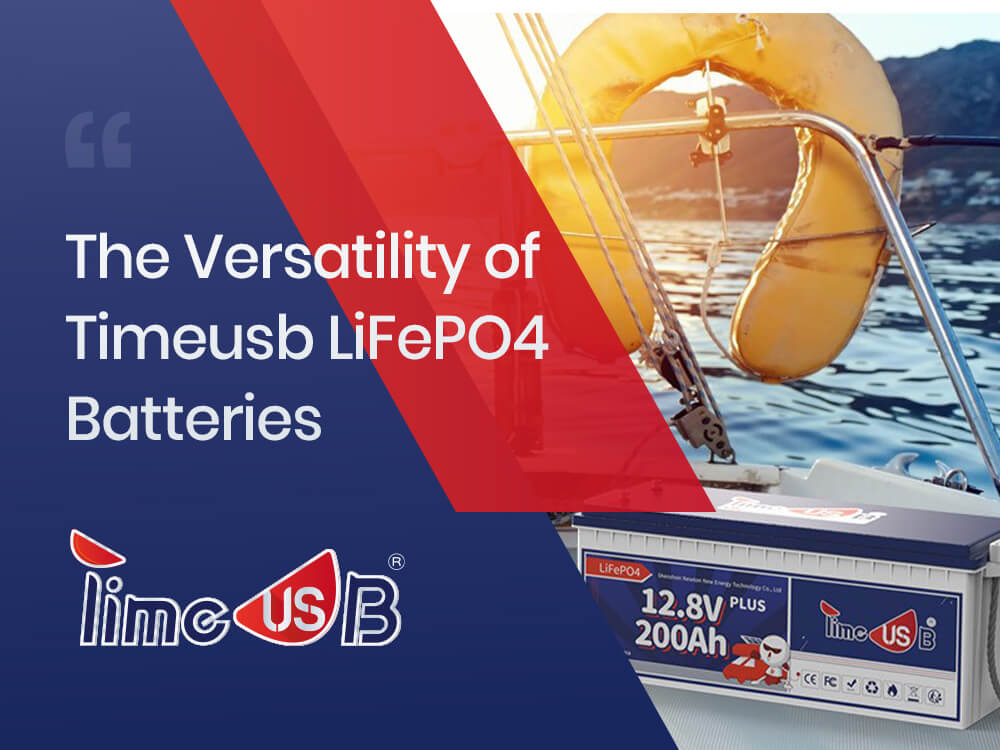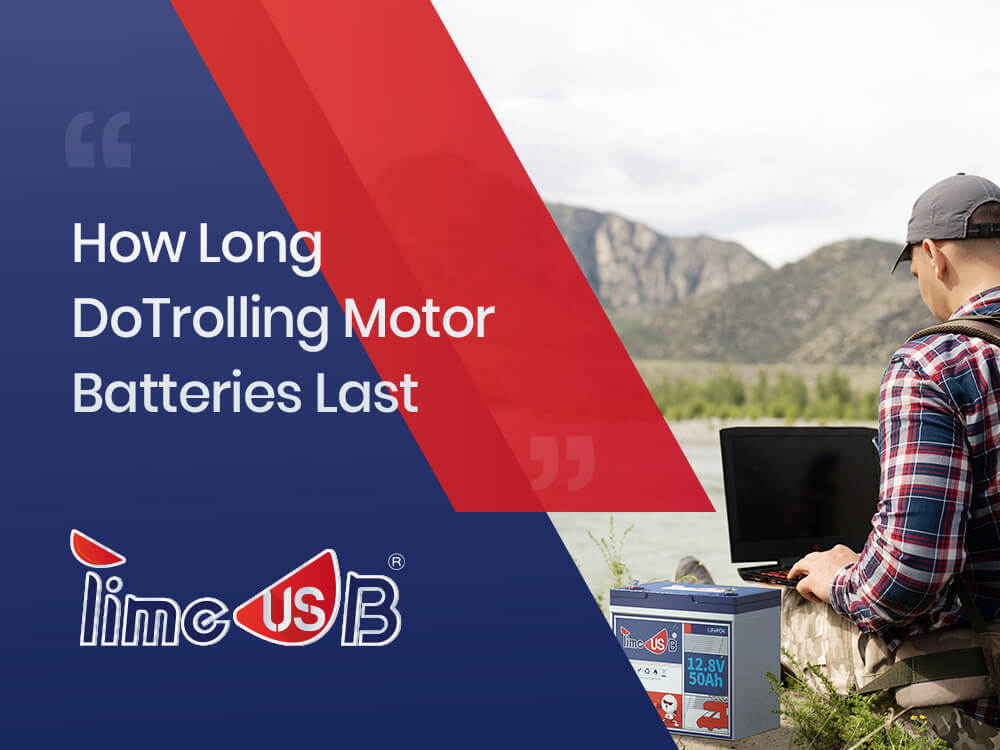Can I Charge Lifepo4 with a Normal Charger? Explained!

LiFePO4 batteries, also known as lithium iron phosphate batteries, have gained popularity as a reliable and long-lasting power source for various applications. As more people embrace this advanced technology, common questions arise, such as whether it's safe to charge LiFePO4 batteries with a regular charger. In this article, we will delve into the details and provide valuable insights into charging LiFePO4 batteries.
Understanding LiFePO4 Batteries
LiFePO4 batteries have numerous advantages over traditional lead-acid batteries, including higher energy density, longer lifespan, and faster charging capability. They are commonly used in electric vehicles, renewable energy systems, and portable electronics due to their superior performance and safety features.
Can I Charge My Lithium Battery with A Lead Acid Charger?
The topic of charging LiFePO4 batteries with regular chargers is a common question among the general public. It's important to acknowledge that lithium batteries, particularly LiFePO4 batteries, differ from lead-acid batteries, and not all battery chargers are suitable for them.
A fully charged 12V LiFePO4 battery typically holds a voltage around 13.3-13.4V, while a lead-acid battery at full charge will be approximately 12.6-12.7V. Even at 20% capacity, a LiFePO4 battery still maintains a higher voltage of around 13V compared to an equivalent lead-acid battery at 11.8V. This highlights the narrow voltage window for LiFePO4 batteries, which is less than 0.5V over 80% capacity.
A dedicated LiFePO4 charger functions as a voltage-limiting device, resembling the lead-acid system in some ways. However, there are distinct differences due to the higher voltage per cell, tighter voltage tolerances, and the absence of trickle or float charge at full capacity. Precision in voltage cut-off is crucial for LiFePO4 cells, as they cannot accept overcharging. Dishonest claims of "miracle chargers" that supposedly extend battery life or provide extra capacity through pulses and gimmicks should be disregarded. LiFePO4 is an efficient system that only accepts what it can safely absorb.
Lithium chargers utilize a CV/CC (constant voltage/constant current) charge algorithm. The charger regulates the current to a predetermined level until the battery reaches a set voltage threshold. Once the battery approaches full charge, the current gradually decreases. This charging system enables efficient, fast charging without the risk of overcharging, making it suitable for various battery types, including LiFePO4 and Li-ion. In conclusion, it's crucial to use a dedicated LiFePO4 charger when charging LiFePO4 batteries. Regular chargers are not specifically designed to meet the unique requirements of these batteries, and using them may lead to inefficient charging, potential damage, and reduced battery lifespan. By investing in a LiFePO4 charger with the appropriate CV/CC charging algorithm, you can ensure safe, efficient charging and maximize the performance of your LiFePO4 batteries.
Lithium Battery Charging Principle
The voltage characteristics of lithium batteries differ significantly from lead-acid batteries during the charge cycle. LiFePO4 batteries exhibit a steep voltage rise towards the end of the charge cycle, leading to a rapid drop in charge current, after which the charger transitions to power supply mode.

Smart chargers designed for lead-acid batteries typically employ specific charge algorithms tailored to different battery types such as Flooded, AGM, and Gel batteries. These algorithms commonly involve a three-stage charge process: Bulk, Absorption, and Float. In the Bulk stage, the charger supplies the battery with the maximum current until it reaches around 80% capacity.
Then, in the Absorption stage, the charger maintains the battery at the maximum voltage while reducing the current as the battery's internal resistance restricts higher charge acceptance. After the current drops to approximately ≤10% of the charger's total output, the charger transitions to the Float stage. The Absorption phase's duration is also time-based, typically transitioning to Float after 4 hours. This prolonged Absorption phase may occur if the charger is undersized for the battery bank or if there are loads running on the system, preventing the current from dropping below the transition threshold.
Most lead-acid chargers include an equalization mode, which may be automatic and cannot be disabled. However, lithium batteries do not require equalization, and applying an equalization charge of 15V or higher to a lithium battery can irreversibly damage the cells.
Lead-acid chargers often feature a "return to bulk" voltage setting. For a fully charged lead-acid battery, the voltage is approximately 12.7V. In Float mode, the charger maintains the battery at a preset voltage (typically between 13.3-13.8V, depending on the battery type) while supporting any loads that are running. If the loads increase beyond the charger's maximum output in Float mode, the battery voltage starts to drop. Once the voltage reaches the "return to bulk" voltage, the charger initiates a new charge cycle to recharge the battery. However, this "return to bulk" voltage setting in lead-acid chargers is too low for lithium batteries. Operating a lithium battery at this voltage would mean it has been depleted to approximately 10-15% state of charge. Lithium charge algorithms typically set a higher return to bulk voltage of 13.1-13.2V. This is another reason why standard lead-acid chargers are not suitable for lithium batteries.
Some lead-acid chargers assess the battery's voltage and resistance during startup to determine the appropriate charge phase to initiate. By measuring these parameters, the charger decides how to proceed with charging the battery. However, using lead-acid chargers with lithium batteries can be problematic. Lithium batteries can hold a voltage above 13V, which can fool some lead-acid chargers into thinking that the battery is nearly full. As a result, the charger may skip the necessary charge stage and directly enter float mode. This is an issue because lithium batteries require specific charge stages, such as constant voltage (CV) and constant current (CC) phases, to ensure optimal and safe charging.
While it is technically possible to use a lead-acid charger on a lithium battery, caution must be exercised. Specifically, it is crucial to avoid using a lead-acid charger with an automatic "equalization mode" that cannot be permanently disabled. If a lead-acid charger can be set to charge no higher than 14.6V, it can be used for regular charging. However, the charger must be disconnected once the battery is fully charged. Leaving a lead-acid charger connected to maintain or store a lithium battery is not recommended, as most lead-acid chargers will not maintain the proper voltage charge algorithm for lithium batteries, potentially leading to battery damage that is not covered under warranty.
In conclusion, the best option for maximizing the performance and lifespan of any lithium battery is to use a charger specifically designed with a dedicated Lithium charge algorithm. This ensures optimal charging parameters and protects the battery from potential damage.
3 Recommended Ways to Charge LiFePO4 Lithium Batteries
Way 1: LiFePO4 Battery Charger
When it comes to charging LiFePO4 batteries, using dedicated LiFePO4 battery chargers is highly recommended for safety and reliability. These chargers are designed specifically for LiFePO4 batteries, providing the necessary voltage, current, and charging algorithm to ensure optimal charging performance and protect the batteries from potential issues like overcharging or undercharging.
LiFePO4 battery chargers often come equipped with advanced features that enhance the charging process. For example, many of these chargers include built-in temperature sensors. These sensors allow the charger to monitor the battery's temperature during charging and adjust the charging current accordingly. By adapting to the battery's temperature, these chargers ensure that the charging process remains efficient and safe, ultimately prolonging the lifespan of the LiFePO4 batteries.

LiFePO4 battery chargers offer an additional advantage of cell balancing, which is crucial for maintaining the health of the battery pack. Cell balancing ensures that individual cells within the battery pack are charged and discharged evenly, preventing any cells from draining faster than others. This balancing process helps to minimize the risk of cell damage, which can occur when cells are subjected to uneven charging or discharging.
Each LiFePO4 battery cell has a nominal voltage of 3.2V, and it is recommended to charge the cells within a voltage range of 3.50V to 3.65V. It's important to adhere to this voltage range since exceeding a charge voltage of 3.65V can be detrimental to the battery cell. LiFePO4 batteries are sensitive to over-voltage and over-current conditions, and surpassing the recommended charge voltage can significantly impact their performance, cause swelling, and even result in long-term damage with reduced lifespan.
To protect against over-voltage, over-current, over-charging, over-discharging, and high temperature, lithium battery packs, including Timeusb's LiFePO4 batteries, are typically equipped with a built-in Battery Management System (BMS). The BMS actively monitors and regulates the battery's voltage, current, and temperature, ensuring that the battery operates within safe limits and providing necessary protections for prolonged battery life and reliable performance.
By utilizing LiFePO4 battery chargers in conjunction with battery management systems, you can ensure that your LiFePO4 batteries are effectively balanced, charged, and protected, maximizing their longevity and maintaining their optimal performance.
Way 2: Solar Panel
Solar panel charging has emerged as a popular method for charging LiFePO4 batteries, particularly among outdoor enthusiasts and professionals, due to its convenience and environmentally friendly nature.
Charging LiFePO4 batteries with solar panels is a straightforward process. All you need is a solar panel that has an output voltage and current compatible with your LiFePO4 battery specifications. Once you have identified a suitable solar panel, you can connect it to your battery using a charge controller. The charge controller plays a vital role in regulating the charging process, preventing overcharging and potential damage to the battery.
One notable advantage of using solar panels to charge LiFePO4 batteries is the sustainability aspect. Solar power is clean, renewable, and readily available, eliminating concerns of fuel scarcity or environmental harm caused by traditional energy sources. Moreover, utilizing solar charging can result in significant savings on energy bills, particularly for regular users.
Additionally, solar panel charging offers great convenience for individuals who are constantly on the move. Whether you are camping, fishing, hiking, or engaged in outdoor work, you can easily carry a portable solar panel with you and set it up to charge your LiFePO4 battery. This eliminates the need to rely on electrical outlets or generators, which can be noisy and emit harmful exhaust fumes.
By harnessing the power of solar panels to charge LiFePO4 batteries, you can enjoy a sustainable, cost-effective, and portable charging solution that aligns with your outdoor lifestyle while minimizing environmental impact.
Way 3: Using Generator/Alternator
Another viable method for charging LiFePO4 batteries is by utilizing an alternator or a generator, which is particularly useful during camping trips or extended road journeys. While it may not provide the same level of specialization as a dedicated LiFePO4 battery charger, it can serve as a dependable alternative when a charger is not readily available.
To charge a LiFePO4 battery using an alternator or a generator, you will require a portable generator that offers an output voltage and current that aligns with your battery's specifications. Additionally, a charge controller is essential to regulate and control the charging process, ensuring the battery receives the appropriate amount of charge.
When using an alternator or generator to charge your LiFePO4 battery, it is crucial to confirm that the charging voltage and current match the specifications of your battery. This ensures safe and effective charging without the risk of damaging the battery.
One notable advantage of utilizing an alternator or generator for LiFePO4 battery charging is the ability to charge your battery while on the move. For instance, when camping in a remote location without access to electrical outlets, an alternator or generator can provide a means to charge your battery and power your devices.
If the alternator or generator supports DC output, it is necessary to connect a DC-to-DC charger between the battery and the generator. On the other hand, if the alternator or generator supports AC output, please refer to the recommendations provided in the "Battery Charger" section above and incorporate a suitable battery charger between the battery and the generator.
How to Charge LiFePO4 Batteries in Parallel and Series
Charging LiFePO4 Batteries in Parallel
When charging LiFePO4 batteries in parallel, it is important to ensure that each battery has a voltage within 0.1V of each other before using them together. This helps to minimize any imbalances between the batteries. The following table provides a summary of the recommended charging voltage ranges for different system voltages when charging LiFePO4 batteries in parallel:

By adhering to these voltage requirements, you can ensure safe and effective charging of LiFePO4 batteries in parallel. Keep in mind that it is always important to follow the specific recommendations provided by the battery manufacturer and use appropriate charging equipment designed for LiFePO4 batteries.
Both CC (Constant Current) and CC-CV (Constant Current - Constant Voltage) charging profiles should adhere to the voltage parameters mentioned in the previous table. If your charger's voltage falls below the specified range, it will not cause damage to the battery, but it will result in undercharging and the battery may not reach its full rated capacity.
On the other hand, if your charger's voltage exceeds the specified range, the Battery Management System (BMS) may disconnect the battery for protection, requiring you to remove the load and reconnect. To avoid this inconvenience and ensure proper charging, it is highly recommended to replace your charger with a high-quality LiFePO4 battery charger that aligns with the appropriate voltage parameters.
Investing in a dedicated LiFePO4 battery charger designed to meet the specific voltage requirements and charging algorithms of LiFePO4 batteries is a wise choice. Such chargers provide optimal charging performance and prolong the lifespan of your battery. It is worth prioritizing safety and investing in quality equipment to ensure the longevity and reliable operation of your LiFePO4 battery system.
CHARGING LIFEPO4 BATTERIES IN SERIES
When connecting LiFePO4 batteries in series, it is crucial to ensure that each battery has a voltage within 50mV (0.05V) of each other before putting them into service. This step helps to minimize the risk of imbalances between the batteries. If the voltage of any battery deviates by more than 50mV (0.05V) from another battery in the series, it is advisable to charge each battery individually to rebalance them. Periodically charging each battery individually can also help prevent imbalances from occurring.
To ensure proper balancing of cells, it is recommended to use a multi-bank charger specifically designed for LiFePO4 batteries when charging LiFePO4 batteries in series. This type of charger charges each battery individually, ensuring that the cells remain balanced throughout the charging process. Alternatively, you can use a 24V LiFePO4 charger or a 48V LiFePO4 charger if you prefer to charge the entire series as a whole.
By following these guidelines, you can maintain the balance and optimal performance of your LiFePO4 battery system when charging batteries in series. Remember to prioritize safety and use chargers specifically designed for LiFePO4 batteries to ensure effective charging and prolonged battery life.
FAQs about Charging LiFePO4 Batteries
1. Should I fully charge my LiFePO4 battery?
Yes, it is generally recommended to fully charge LiFePO4 (Lithium Iron Phosphate) batteries for optimal performance and longevity. LiFePO4 batteries have a relatively flat voltage discharge curve, which means they maintain a more consistent voltage throughout their discharge cycle compared to other battery chemistries. This characteristic allows LiFePO4 batteries to provide a fairly constant power output until they are near fully discharged.
Fully charging the LiFePO4 battery ensures that you utilize its maximum capacity and maximize the time it can operate before needing to be recharged. Charging the battery to its full capacity also helps maintain balance between the cells and prevents capacity imbalances within the battery pack, which can negatively impact overall performance.
2.How long does it take to charge a LiFePO4 battery?
The charging time for a LiFePO4 battery depends on various factors, such as the battery's capacity, the charger's output current, and the state of charge of the battery before charging. Generally, LiFePO4 batteries can be charged relatively quickly compared to other battery chemistries. Take charging Timeusb 12V 100Ah Pro LiFePO4 lithium battery for example, it is recommended to charge in the current 20A (0.2C), so it will take approx 100AH/20A=5H to fully charge.
3. How to Charge LiFePO4 lithium batteries in Cold weather?
LiFePO4 batteries typically have a recommended charging temperature range of 0°C to 45°C (32°F to 113°F). Charging lithium batteries under 0°C will damage the battery, therefore batteries with low-temperature charging protection like Timeusb 12.8V 140Ah LiFePO4 lithium battery is quite important if you live in the area where winter is long. Charge the battery indoor is recommended.



![[Full Guide] The Comprehensive Guide to LiFePO4 Battery Life](http://www.timeusbpower.com/cdn/shop/articles/The_Comprehensive_Guide_to_LiFePO4_Battery_Life_757d2749-9468-4739-ac83-0960c27749b0.jpg?v=1722918256&width=1080)
